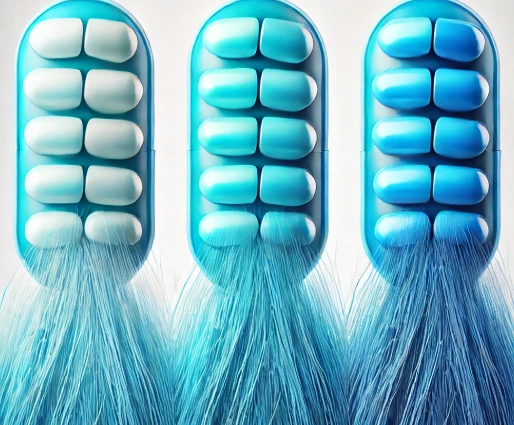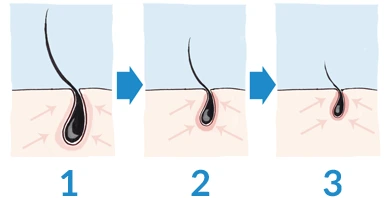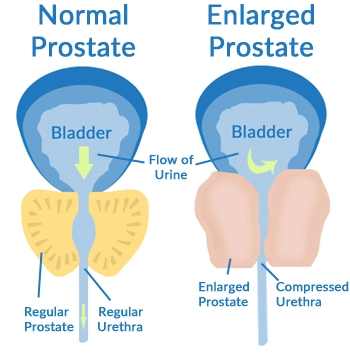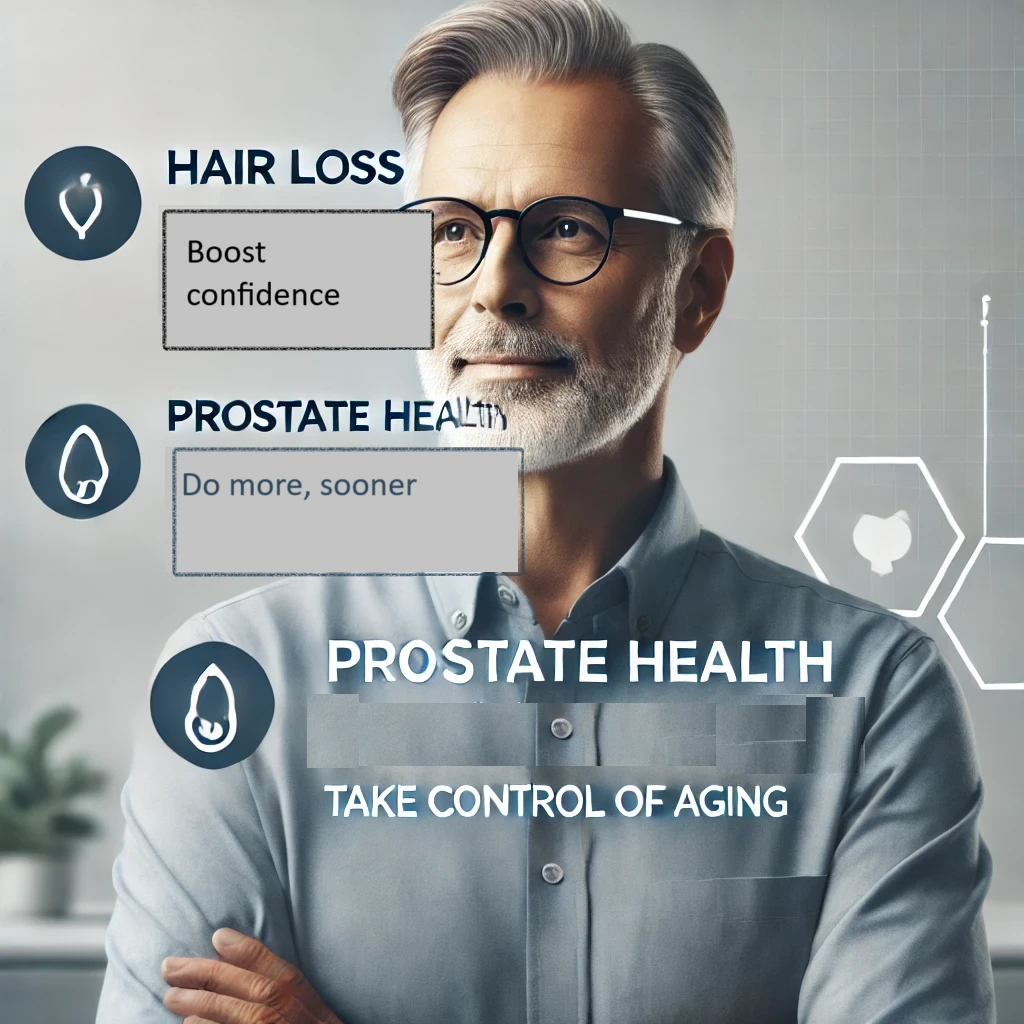- Stay Ahead of the Game:
- Understanding Male Pattern Baldness
- What is Finasteride? A Solution for Male Pattern Baldness
- The Link Between Hair Loss and Prostate Growth
- Understanding BPH: More Than Just an Annoyance
- Finasteride and Prostate Cancer Prevention
- Addressing Concerns: What About Side Effects?
- Living with Hair Loss
- The Bottom Line: Take Control of Aging
- Don’t wait. Take charge of your health today.
Stay Ahead of the Game: How One Pill Can Save Your Hair Growth and Keep You Feeling Young
Introduction:

Understanding Male Pattern Baldness
What is Finasteride? A Solution for Male Pattern Baldness
Finasteride is a medication that has been widely used for decades to address two key men’s health concerns: hair loss and benign prostatic hyperplasia (BPH)—an enlargement of the prostate gland that can interfere with urination.
At 1 mg per day (sold as Propecia), finasteride helps men maintain and even regrow hair. At a higher dose of 5 mg per day (sold as Proscar), it is prescribed to shrink the prostate and improve urinary function. While initially developed for BPH, researchers quickly noticed its beneficial effect on male pattern baldness, making it a dual-purpose solution for aging men. Finasteride is effective for pattern hair loss, which includes both male and female pattern hair loss. Among various medical treatments, finasteride is one of the effective options for addressing hair loss.
The Link Between Hair Loss and Prostate Growth
You might wonder—what do hair loss and prostate health have in common? The answer lies in a hormone called dihydrotestosterone (DHT). Hair loss occurs when new hair fails to replace lost hair, and DHT contributes to this process.

DHT is an offshoot of testosterone that plays a role in both hair follicle shrinkage and prostate enlargement. While DHT is important during puberty, as men age, excess levels start causing problems:
- On the scalp, it binds to hair follicles, leading to thinning and eventual hair loss.
- In the prostate, it stimulates excessive growth, which can result in urinary difficulties.
- Androgens stimulate hair growth in certain body areas like the beard, while inhibiting it on the scalp in genetically susceptible individuals.
By blocking DHT, finasteride directly tackles both issues, preserving hair density while helping to maintain a normal prostate size.

Understanding BPH: More Than Just an Annoyance
While hair loss is often seen as a cosmetic concern, BPH is a quality-of-life issue. The prostate is a walnut-sized gland that sits below the bladder, surrounding the urethra (the tube that carries urine out of the body). As the prostate enlarges, it compresses the urethra, leading to:
- Frequent nighttime urination (no more sleeping through the night)
- Weak urine stream (taking forever to empty your bladder)
- Incomplete emptying (feeling like you have to go again soon after)
Left untreated, BPH can worsen over time, sometimes leading to urinary retention, where you can’t urinate at all—a painful emergency requiring immediate medical intervention.
Why wait until these symptoms start interfering with your life? Taking finasteride earlier may prevent or slow the progression of BPH, keeping urinary function normal as you age.
Finasteride and Prostate Cancer Prevention
Shockwave therapy is a versatile treatment option suitable for a wide range of patients. Ideal candidates include:
- Individuals with musculoskeletal conditions such as tendonitis, plantar fasciitis, and osteoarthritis.
- Patients suffering from erectile dysfunction, particularly those with vascular ED.
- Those who have not found relief from other treatments like physical therapy or medication.
However, there are certain contraindications to be aware of:
- Active infection or inflammation in the treatment area.
- Pregnancy or breastfeeding.
- Presence of cancer or tumors in the affected area.
- Patients with pacemakers or other implantable devices.
- Recent surgery or trauma in the treatment area.
Finasteride and Prostate Cancer Prevention
Finasteride doesn’t just support urinary function—it may also play a role in reducing prostate cancer risk.
The Prostate Cancer Prevention Trial (PCPT) found that men who took finasteride had a 25-30% lower risk of developing prostate cancer. While there was an increase in higher-grade cancers in those taking the drug, further analysis found no increased mortality—meaning that finasteride may help prevent prostate cancer without worsening overall survival rates.
For men with a family history of prostate cancer or those looking for a proactive approach to health, this is a compelling benefit.
Addressing Concerns: What About Side Effects?
One of the most frequently asked questions about finasteride is whether it affects libido or sexual performance. While some men report mild side effects such as decreased libido, studies show that the vast majority of users experience no issues.
Side effects, if they occur, are reversible upon stopping the medication.
The low dose used for hair loss (1 mg daily) is far less likely to cause noticeable changes compared to the higher 5 mg dose used for prostate treatment.
If you’re worried about side effects, the best approach is to try it—you can always stop if you experience anything unusual.
Living with Hair Loss
Living with hair loss can be challenging, but there are several ways to manage the condition and improve one’s quality of life. Here are some tips for living with hair loss:
Acceptance: The first step to living with hair loss is to accept the condition. It’s essential to come to terms with the fact that hair loss is a natural part of life and that it’s not a reflection of one’s worth or identity.
Seek support: Talking to friends, family, or a therapist can help individuals cope with the emotional impact of hair loss. Joining a support group or online community can also provide a sense of connection and understanding.
Try different hairstyles: Experimenting with different hairstyles can help individuals find a style that makes them feel confident and comfortable. Consider consulting a stylist who specializes in hair loss.
Use hair care products: Using gentle hair care products can help promote hair growth and reduce hair loss. Look for products that are sulfate-free and contain natural ingredients.
Consider treatment options: There are several treatment options available for hair loss, including medications, hair transplantation, and low-level laser therapy. Consult with a doctor or dermatologist to determine the best course of treatment.
Female pattern hair loss: Female pattern hair loss is characterized by a progressive thinning of hair, often with a noticeable reduction in hair density. The causes are not entirely clear, but it can be managed with similar strategies as other types of hair loss. Women can use diagnostic scales designed for this condition and explore treatments like topical solutions, medications, and lifestyle changes.
Practice self-care: Taking care of one’s physical and emotional health is essential for managing hair loss. Engage in activities that promote relaxation and stress reduction, such as exercise, meditation, or yoga.
Focus on overall health: Hair loss can be a symptom of an underlying medical condition. Focus on maintaining a healthy diet, exercising regularly, and getting enough sleep to promote overall health and well-being.
By following these tips, individuals can learn to live with hair loss and improve their overall quality of life. Remember, hair loss is a common condition that affects millions of people worldwide, and it’s not a reflection of one’s worth or identity.
The Bottom Line: Take Control of Aging
Aging is inevitable, but losing your hair and dealing with frustrating urinary issues doesn’t have to be. Many men lose hair as they age, but finasteride can help prevent this. Finasteride can help prevent further hair loss, making it an effective treatment option.
✔ Hair loss – Maintain and regrow your hair, boosting confidence. ✔ Prostate health – Prevent enlargement and reduce urinary problems. ✔ Cancer prevention – Potentially lower prostate cancer risk.
By taking finasteride early, you’re making a small daily investment in your long-term health—one that could save you from costly hair restoration procedures, frustrating nighttime bathroom trips, and even medical emergencies.

Don’t wait. Take charge of your health today.
Talk to your doctor about whether finasteride is right for you and start protecting your youthful look and prostate health with a single daily pill.
Peak Masculinity
Starts Here

By Dr. Ryan Welter
August 15, 2025




